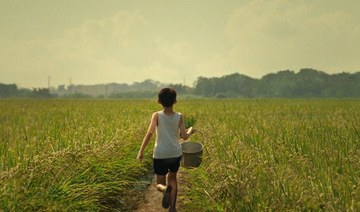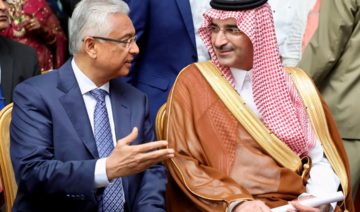RAWALPINDI: Syed Ashraf recalled sitting in tears by the charred wreckage of his music studio after a band of Taliban fighters vandalized the facility days after the hard-line group swept to power in Kabul following the withdrawal of US-led forces in August 2021.
Afghanistan has a strong musical tradition, and a pop music scene had flourished there over the past two decades. But many musicians, fearing for their futures under the Taliban which governs according to a harsh interpretation of Islamic law, fled the country to neighboring Pakistan as Taliban fighters started harassing artists and attacking music venues.
Last week, at a small music school he has opened in Rawalpindi for Afghan refugee students as well as Pakistanis, Ashraf remembered looking at the smoldering remains of the musical instruments at his school on that August day two years ago and deciding he would leave his homeland for Pakistan to build a new life with music and hope.
Today, however, Ashraf, like other exiled Afghan artists, is facing uncertainty again amid Islamabad’s deportation drive against illegal migrants that has disproportionately hit Afghans, who form the largest number of migrants to Pakistan.
While Ashraf and his family members have visas and the government says it will not deport those with valid documents, he still fears Pakistani authorities might ask him to leave in the next phase of the expulsion program.
“Afghan artists who returned to Afghanistan from Iran faced a lot of trouble from the Taliban,” he told Arab News. “They were beaten, thrown into jails … Therefore, we appeal to Pakistan not to send Afghan artists back.”
The last time the Taliban had ruled the country, in the late 1990s, they outright banned music. Soon after taking over again, instruments at the famed Afghanistan National Institute of Music, founded in 2010 as a rare coeducational institute, were destroyed and its administrators and students relocated to Lisbon, Portugal. Renowned for its inclusiveness as a symbol of a new Afghanistan — with boys and girls studying together and performing to full houses in the United States and Europe — the school’s campus was occupied by a Taliban faction and its bank accounts were frozen and its offices ransacked.
Smaller music studios like Ashraf’s never stood a chance.
“I was an engineer by profession, but I learned music out of passion,” Ashraf said. “After teaching myself music, I taught it to children in Afghanistan. However, everything came to an end after the arrival of the Taliban.”
The 62-year-old musician who now lives in Rawalpindi with his family came armed with the firm belief that the best “revenge” against the Taliban would be to ignite the love of music among refugees in Pakistan. He partnered up with 42-year-old Afghan painter, Sayed Ibrahim, whose art gallery in Kabul was also destroyed by the Taliban.
“With the assistance of Sayed [Ibrahim], I established a music academy here [in Rawalpindi] and bought some instruments so I could cultivate a love for music among the youth,” Ashraf said.
“My goal was to teach them, enabling them to express their inner pain and show their love for their homeland by playing music.”
Initially, Ashraf and Ibrahim were not optimistic about the success of their venture but the response was “overwhelming.”
“It has been two to three months since we launched the music academy, and there are 10 to 12 students already enrolled,” Ibrahim told Arab News.
“Music is a necessity for everyone and in my experience, every Afghan, even common people, love music,” an Afghan student at the academy who identified himself only by his first name Fareed said.
“People sing everywhere, in every village, and it’s common to hear music while people are working. It was a very good thing there but unfortunately, it’s now banned.”
Like most other Afghan nationals in Pakistan, he too was worried about his future as well as the future of the teachers and students at the academy, many of whom are refugees.
“COMBAT SADNESS THROUGH MUSIC”
According to the United Nations Refugee Agency (UNHCR), out of 3.7 million Afghans in Pakistan, only 1.4 million are registered. As per a joint report issued by the UNHCR and the International Organization for Migration (IOM), over 450,000 Afghan nationals had returned to their homeland until Dec. 9. Afghan community leaders say even those with Afghan Citizenship Cards and Proof of Proof of Registration documents, both of which entitle staying in Pakistan legally, have been deported.
The wave of expulsions has worried Ahmed Baraham, a 19-year-old student at Ashraf’s music academy, whose family left Afghanistan and entered Pakistan on visas in 2022 after the Taliban banned girls’ education.
He said that he joined the academy after he slipped into a state of depression.
“I want to combat sadness through music as it draws people toward humanity,” Baraham told Arab News. “It’s a soft thing. A person feels a sense of peace by immersing himself in music.”
But there are new fears as Pakistani law enforcement agencies carry out search operations and raids in a bid to round up illegal migrants. Baraham said he too was questioned by the police some weeks ago but allowed to go free after a brief interrogation.
The experience left him in distress for days.
“People have gone into depression due to police raids,” Baraham said. “No one knows what will happen. There were rumors that even those with visas and passports will be deported. We, too, find ourselves in great distress.”
In an op-ed published in The Telegraph on Sunday, Pakistani Prime Minister Anwaar-ul-Haq Kakar said the country would not deport at-risk groups such as musicians, journalists, and human rights activists.
But the young music student was not convinced and feared his fate in Afghanistan under Taliban rule.
“If we can study there and pursue our passion for music, there is no issue for us to go back to Afghanistan,” Baraham said. “But, they [Taliban] consider these things to be forbidden.”
Exiled Afghan musicians fear expulsion from Pakistan, future in Taliban-led homeland
https://arab.news/8jbcd
Exiled Afghan musicians fear expulsion from Pakistan, future in Taliban-led homeland
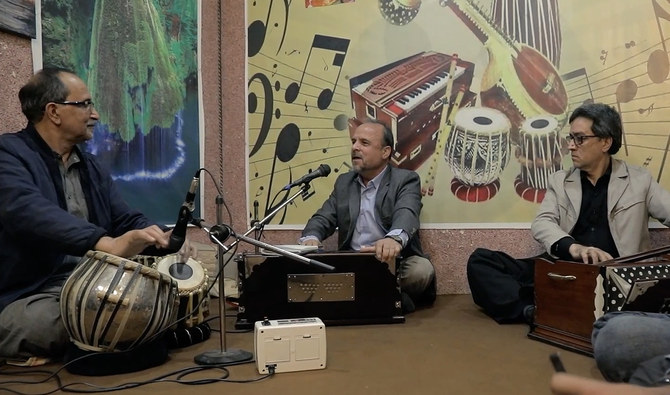
- Afghan artists and musicians fled after the Taliban returned to power in Kabul in 2021
- As Pakistan expels illegal migrants, musicians fear they may be next in line to be deported
Saudi Film Festival ends with honors for best production, music, acting
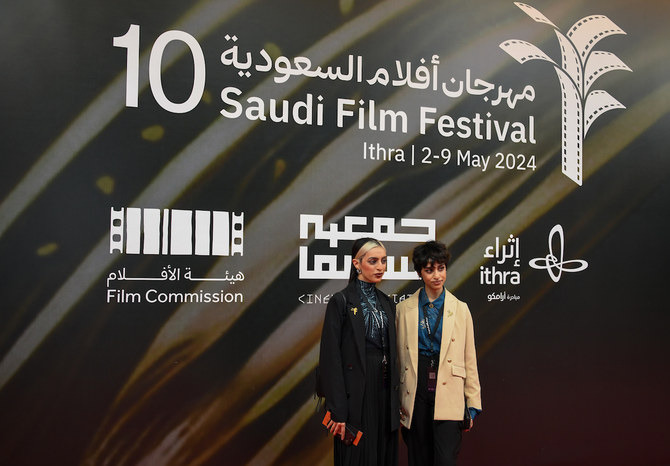
- Kingdom’s acclaimed wildlife documentary ‘Horizon’ and film ‘Hajjan’ win top awards
DHAHRAN: The red carpet was rolled out on the final night of the eight-day 10th Saudi Film Festival on Thursday with awards handed out for best production, music and acting.
The event, held at King Abdulaziz Center for World Culture, or Ithra, had included masterclasses, workshops, book signings and networking opportunities.

The closing ceremony was a glamorous event, as presenters handed out the Golden Palm awards on stage.
Of the 76 films that were screened, 53 titles competed for 36 awards.

The acclaimed 2024 wildlife documentary “Horizon” won in its category. It was produced by the Konoz Initiative in collaboration with the Ministry of Media’s Center for Government Communication and the National Center for Wildlife.
Ithra’s own award-winning “Hajjan,” about a young camel rider, won for best music, best actor for the young star Omar Alatawi, and best actress for Tulin Essam. The film also won the Jury Golden Palm.

One of the big winners on the night was the documentary shown at the opening ceremony of the festival on May 2, “Underground,” about the music scene in Saudi Arabia.
The list of winners and the recorded stream are available on the Ithra website.
Highlights from the Middle East Institute’s ‘Louder Than Hearts’ in Washington DC
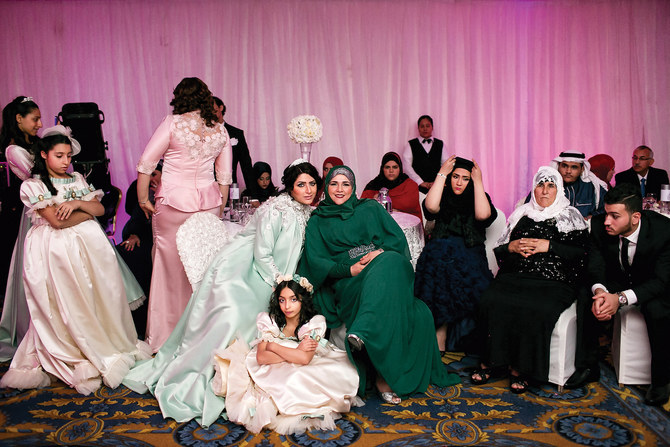
DUBAI: The Middle East Institute in Washington DC is hosting works by female photographers from the Arab world.
Tasneem Al-Sultan
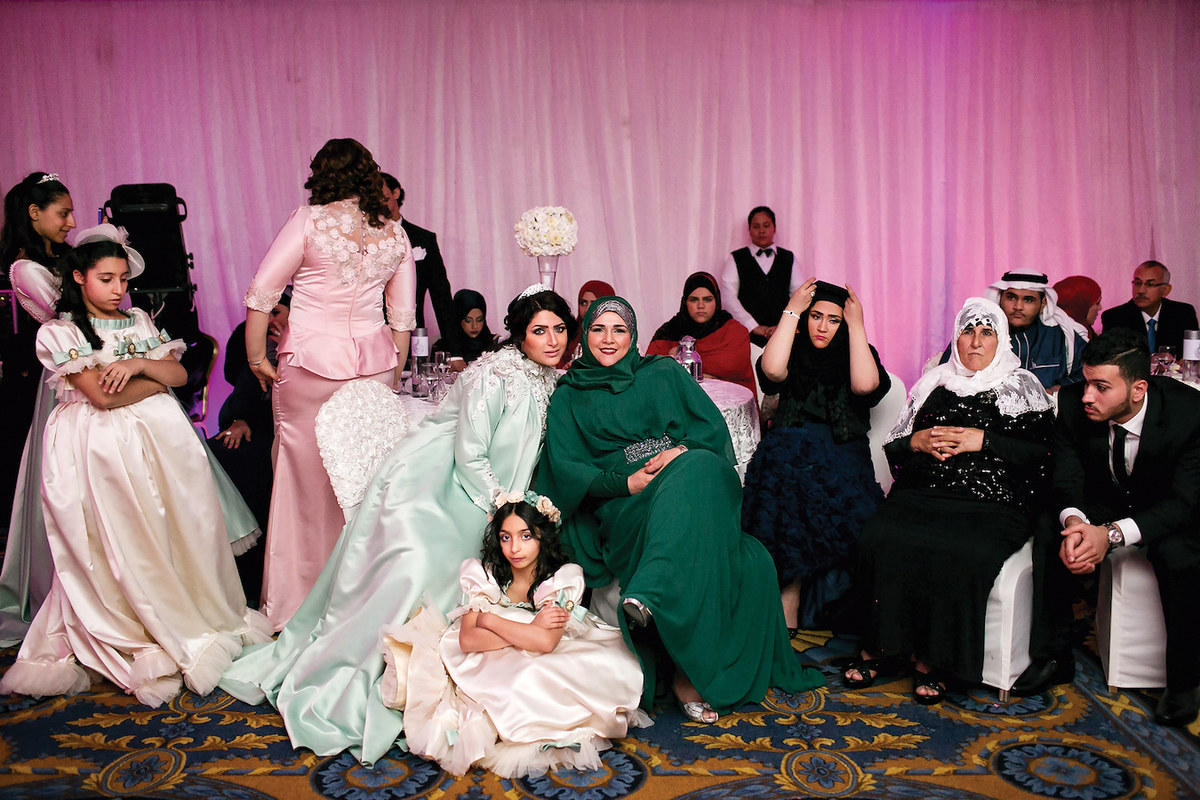
‘Diversity Within Saudi Weddings’
The acclaimed Lebanon-born Palestinian-American photographer Rania Matar has curated “Louder Than Hearts,” an exhibition of work by 10 female photographers, including herself, from the Arab world and Iran that runs at the Middle East Institute in Washington DC until October 4. Saudi Arabia is represented by Riyadh-based “visual storyteller and photographer” Tasneem Al-Sultan, specifically her “Saudi Tales of Love” series, which, the MEI says, is “informed by her personal journey through marriage and divorce.”
In wedding images such as this one, Al-Sultan “depicts the constructs and expectations of marriage, including the elaborate ceremonies, as well as the various societal constraints the Saudi women she photographed faced and triumphed over” and “delves into the complexities of relationships and the interplay of tradition and individual choice.”
The series has garnered global recognition for Al-Sultan, featuring in Time’s “Lightbox” photo series and the international photography fair Paris Photo.
Rania Matar

‘Farah (In Her Burnt Car)’
Matar’s photography, the MEI states, “captures intimate moments that transcend borders and cultures and explores themes of personal and collective identity through photos of women in the US and the Middle East.”
The series to which this image belongs — “Where Do I Go? Fifty Years Later” — began after the devastating explosion in Beirut Port in August 2020, and the title alludes to the fact that 2025 will be the 50th anniversary of the beginning of Lebanon’s civil war. The wave of emigration that followed the 2020 explosion was “akin to that of 1984-85 when a wave of young people including herself left the war-stricken country. By photographing these women, Matar was relating to their experiences and their dilemma of immigration (decades) later.”
Rehaf Al-Batniji

‘Malak’
This image comes from Paris-based, Gaza-born photographer Al-Batniji’s series titled “(Shatt) The Beach & (Shatta) The Chili Pepper,” a project that explores “the social and cultural anthropology” of her hometown. Shatta is a major ingredient in Palestinian cuisine, and “emblematic of Gaza, where life’s challenges can sting like this fiery spice,” while shatt is “the serene beach where residents seek solace and escape their daily reality.”
Al-Batniji’s work, the MEI states, “offers an intimate portrayal of the territory, reflecting the struggles and intensity of life under siege, as well as the resilience and vibrancy of its communities with refreshing hopefulness. Al-Batniji rejects the brutal imagery of conflict and instead uses color as a tool of resistance.”
Carmen Yahchouchi

‘Victoria’
Mali-born Lebanese photographer Yahchouchi has work from three of her series in the exhibition, all of which “capture the enduring impact of the Lebanese Civil War on women, highlighting their pivotal roles in the middle of chaos and devastation,” the MEI’s promotional material states. “Her work offers glimpses into their resilience, strength and sacrifice as they navigated through tumultuous periods of history emerging as heroines within their communities and families and assuming new roles in the public sphere.” This piece is from her series “My Mother’s Gun,” and demonstrates Yahchouchi’s talent for photographing “the intimate spaces of human experience, inviting viewers into her subjects' unique worlds.”
Tanya Habjouqa

‘Inner Resistance’
The Jordanian photographer and journalist, who lives and works in East Jerusalem, “melds a mordant sense of irony with an unyielding examination of the repercussions of geopolitical conflicts on people’s lives,” according to the MEI. This image comes from her “Occupied Pleasures” series, which, the institute says, “presents a multidimensional portrayal of humanity’s ability to find joy amid adversity in the West Bank, Jerusalem, and Gaza, utilizing a sharp sense of humor about the absurdities produced by a 47-year occupation.”
Film Review: ‘Mother’s Instinct,’ a psychological thriller that keeps you guessing until the end

- Anne Hathaway plays "the perfect mother" in this 2024 psychological thriller in a remake of a French film, which itself was a novel adaptation
Anne Hathaway has played many roles over the course of her career: a surprise princess, an assistant to a fashion magazine editor, a recovering addict, Cat Woman. In “Mother’s Instinct,” she plays a mother — the perfect mother.
In this 2024 psychological thriller — a remake of a French film which itself was a novel adaptation — Hathaway is joined by Jessica Chastain. The two play best friends who are living the American dream.
They are next-door neighbors. Their husbands are the best of friends, as are their eight-year-old sons. They live in an affluent neighborhood in cookie-cutter 1960s’ suburban America. Everything seems idyllic.
The film begins with Celine’s (Hathaway) birthday. Alice (Chastain) and the women’s husbands throw a surprise backyard party. Celine receives a pearl necklace, a joint gift from their family and friends. It’s a wonderful celebration.
But the next day, there’s a tragic death.

One of the young boys falls from a balcony under suspicious circumstances. At the time, he was being supervised by the other mother.
The film forces us to ask: How can a mother live with herself after she entrusted her son’s life to her friend? Could anyone forgive themselves? Could they forgive their friend?
By mid-film, there are still two mothers — but now one is childless. The one whose son has survived feels guilt. The one who lost her boy feels fury. Both feel grief.
As the story unfolds there are more deaths and we begin to wonder: Did one mother deliberately harm the other’s son? Who is innocent here? Who is evil? Was it an accident or a deliberate act? And who will die next?
Events become more sinister. Nothing seems perfect anymore. Even the beautiful pearl necklace ends up broken on the floor, the tiny gems rolling around chaotically.
First-time director Benoit Delhomme does a good job of leading our eyes where he wants them to go. The cinematography is beautiful, while the styling and outfits are divine.
This film keeps you guessing until the end. And there is no happy ending; sometimes, the happy ending is that there is one at all.
US animation lights up Saudi Film Festival
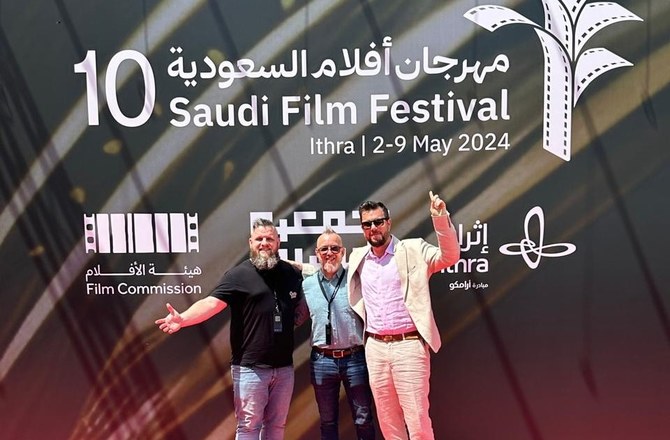
DHAHRAN: Saudi filmmakers of the future were given a masterclass in the latest animation techniques as part of the Saudi Film Festival this week.
The animation workshops were led by experts from the US as part of a collaboration between the festival and the American Chamber of Commerce and US Consulate in Dhahran.
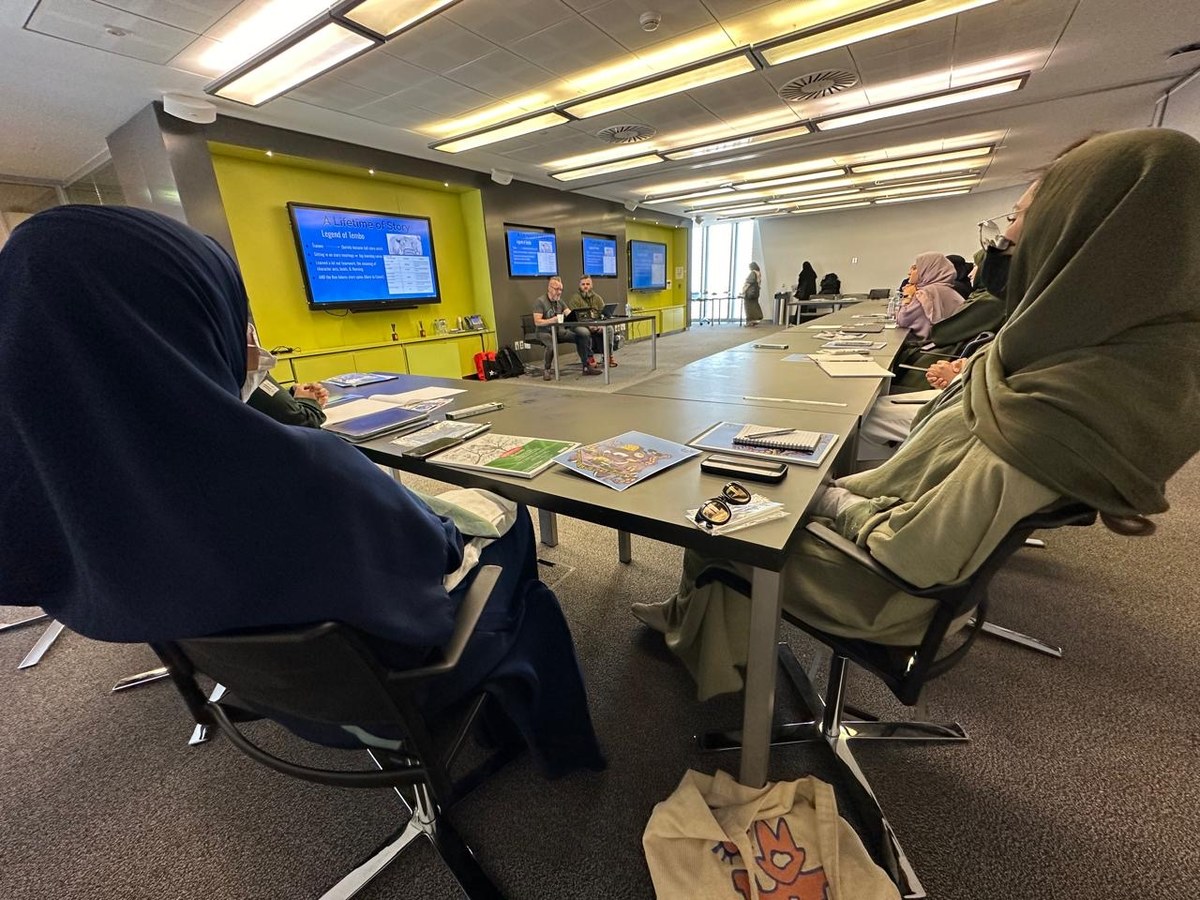
Todd Albert Nims, one of the pioneers in shaping the Saudi film industry over the past decade, told Arab News that with a population of 36 million, many under 35, Saudi Arabia is ripe with potential in the film sector.
Nims, an American who was born and raised in Dhahran, is now head of the AmCham Arts, Culture and Entertainment Committee, and has been involved in all aspects of Saudi-centered films, from acting to producing.
“I went to the first Saudi Film Festival in 2008 and worked with them on bringing the Saudi Film Festival into Ithra … I was there with them, and I’ve been here within this journey for the last 16 years,” he said.
Nims said that many Saudis grew up watching Disney films, and began their filmmaking efforts creating short content on YouTube.
He said there is huge potential for the Saudi market to grow, adding that he wanted to offer young filmmakers the opportunity to “gain expertise right in their backyard.”
Travis Blaise, who has over three decades of experience in animation, and has worked on Disney classics such as “Beauty and the Beast” and “The Lion King,” was on hand to conduct a five-day workshop.
“I was brought on to bring something new and unique to this Saudi Film Festival, which was bringing storytelling, or visual storytelling, to script,” he told Arab News.
Together with fellow American William Winkler, Blaise dedicated each day to bringing the overall picture to life, sketching ideas, developing the story structure, and even discuss the backstory of characters.
The goal was for each student to develop their own 30-second script. The workshop began with 11 students, but the figure soon ballooned to 20.
“Every single student was Saudi; most of them were women from several universities, while a couple were already professionals working in the industry,” Blaise said.
“I love the excitement and passion that they (the Saudi students) share because I have shared that same passion for the last 34 years, and the fact that I can bring something of my own experience to someone who is passionate and open-minded and willing to learn about film really is exciting,” he said.
The experts told Arab News that they are committed to building connections between the US and Saudi film industries, recognizing its potential to inspire, educate, and entertain audiences both domestically and internationally.
“Through filmmaking, we aim to strengthen ties between the US and Saudi Arabia by fostering mutual understanding and creative collaboration,” Alison Dilworth, the US deputy chief of mission, told Arab News.
British Council, Saudi Cinema Association working to ‘drive’ industry growth
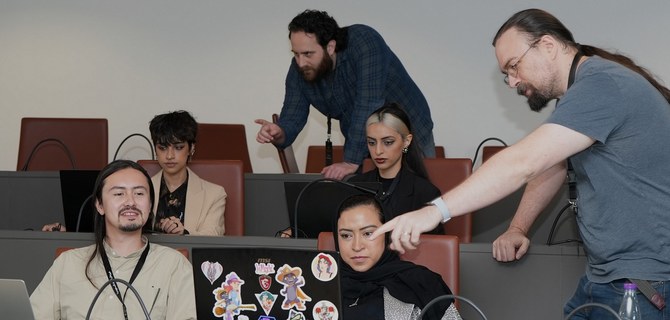
- Two organizations collaborated for 10th Saudi Film Festival
- Aim to find emerging talent and foster cultural exchange
DHAHRAN: The partnership between the British Council and the Saudi Cinema Association this week for the 10th edition of the Saudi Film Festival will help boost the industry, showcase emerging talent, and foster cultural exchange, say officials and creatives.
The event at the King Abdulaziz Center for World Culture, or Ithra, in Dhahran, began on May 2 and concludes on Thursday.
For the occasion, Studio Ulster and the SCA offered a training program to empower Saudi Arabia filmmakers with cutting-edge animation skills. The program commenced online and continued during the festival.
As part of the festival’s program, the British Council showcased a curated selection of UK short films, providing a platform for filmmakers to engage with Saudi Arabia audiences and forge meaningful connections.
Furthering this initiative was a series of masterclasses hosted by animation legends from Blue Zoo Productions, who offered insights into the nuances of building a thriving animation industry within the cultural framework of the country.
“We believe in the power of the arts to drive socio-economic development and are committed to fostering long-term partnerships that empower artists and enrich communities,” Amany Abouzeid, regional arts director of British Council MENA, said of the festival’s role in elevating the Kingdom’s Vision 2030 goals.
UK-based film producer Tony Humphreys, who came from London to attend the event, had high hopes for the week.
“I’m a producer and I’m also a consultant over here at the moment in the Saudi Film Festival to help try and link Saudi businesses and Saudi creatives with UK businesses and UK creatives,” Humphreys told Arab News.
The experience exceeded his expectations.
“I’ve met lots of very interesting people; lots of energy, lots of desire to do more and succeed creatively and lots of collaboration potential between our two nations,” he said.
“I’ve seen several of the programs, particularly the short film programs, I think there’s been a really interesting mix across all sorts of storytelling; some more traditional, some quite challenging in terms of themes and content. I think there’s a real vibe and a positive sort of drive of wanting to take the industry further very quickly.”
Ahmed Al-Mulla, who founded the SCA, said: “Our filmmakers were dreamers; they made their films underground and then went outside the country to screen them … Now, things changed in the blink of an eye.”




